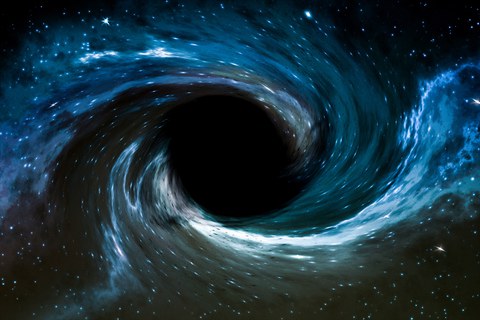Nov 06, 2024
Researchers discover extremely voracious black hole from shortly after the Big Bang
An international research team has made a highly unusual discovery in the farthest reaches of space. Using the James Webb Space Telescope (JWST), they found a fast-growing supermassive black hole from a very early phase of the universe shortly after the Big Bang. Named LID-568, it raises fundamental questions about our current understanding of supermassive black holes due to its extremely unusual nature. The research team reported their findings in a recent contribution to the Nature Astronomy journal.
The 16 researchers used the JWST to focus on a small region of the skies, where they found a striking cluster of objects that are bright in the X-ray range but almost invisible in optical and infrared ranges. The research team is led by Dr. Hyewon Suh and Prof. Günther Hasinger, Lighthouse Professor at TU Dresden; Senior Scientist at DESY and designated Founding Director of the German Center for Astrophysics in Lusatia. Using the JWST’s spectroscopic instruments, the researchers realized that what they were seeing was a new population of supermassive black holes from the early universe, shrouded in dust. One of these objects, a tiny speck discovered some 1.5 billion years after the Big Bang, stood out in particular: LID-568. This is a supermassive black hole with a mass of around ten million suns. LID-568 stands out from previous discoveries due to its intense X-ray emission and its unusually high consumption of matter (accretion rate), which is unprecedented at this scale.
DZA Founding Director Professor Günther Hasinger is thrilled with this discovery:
“This is the first time that a galaxy in the early universe has been discovered to be dramatically overfeeding its central massive black hole: more than 40 times as much as it should be eating. Whether or not this will solve the mystery of early galaxies and black holes discovered by the James Web Space Telescope is still in the stars. In any case, it shows that this telescope fundamentally shifts our understanding of the earliest universe.”
Research Group Leader Dr. Hyewon Suh from the International Gemini Observatory/NSF NOIRLab, Hawaii (USA): “The discovery of a black hole in an extreme accretion phase in the early universe - a previously unexplored type of black hole - opens up exciting possibilities for research into the formation of black holes. Further investigation will provide invaluable insights into the early stages of black hole growth.”
It is not unusual for black holes to emit light. But their maximum luminosity is related to their accretion rate. This is constrained by the "Eddington limit", at which point the radiation should theoretically stop sucking in matter. The special thing about LID-568 is its exceptionally high activity in consuming matter – and this at an early phase of the universe, when the first galaxies must also have formed. The hunger of LID-568 is 40 times higher than the maximum described in theories. This exceeds the Eddington limit, which is why researchers refer to it as a super Eddington accretion.
Background: Black holes
Black holes can form at the end of a star's life, when the star stops emitting light. However, they can also arise from the collision of entire galaxies. Due to their large mass, they have so much gravitational pull that nothing can escape them – not even at the speed of light (300,000 km/sec). There is also a supermassive black hole at the center of our galaxy, the Milky Way. It's called Sagittarius A and is located in the Sagittarius constellation. Its mass is slightly less than four million suns. For its discovery, the teams led by researcher Andrea Ghez and German astrophysicist Reinhard Genzel were awarded the Nobel Prize in Physics in 2020.
Contact:
TU Dresden
Press Office
Phone: +49 351 463-32398
Mail:
Deutsches Elektronen-Synchrotron DESY
Dr. Thomas Zoufal, Head of Press Office
Phone: +49 (0)40 8998 1666
Mail:

